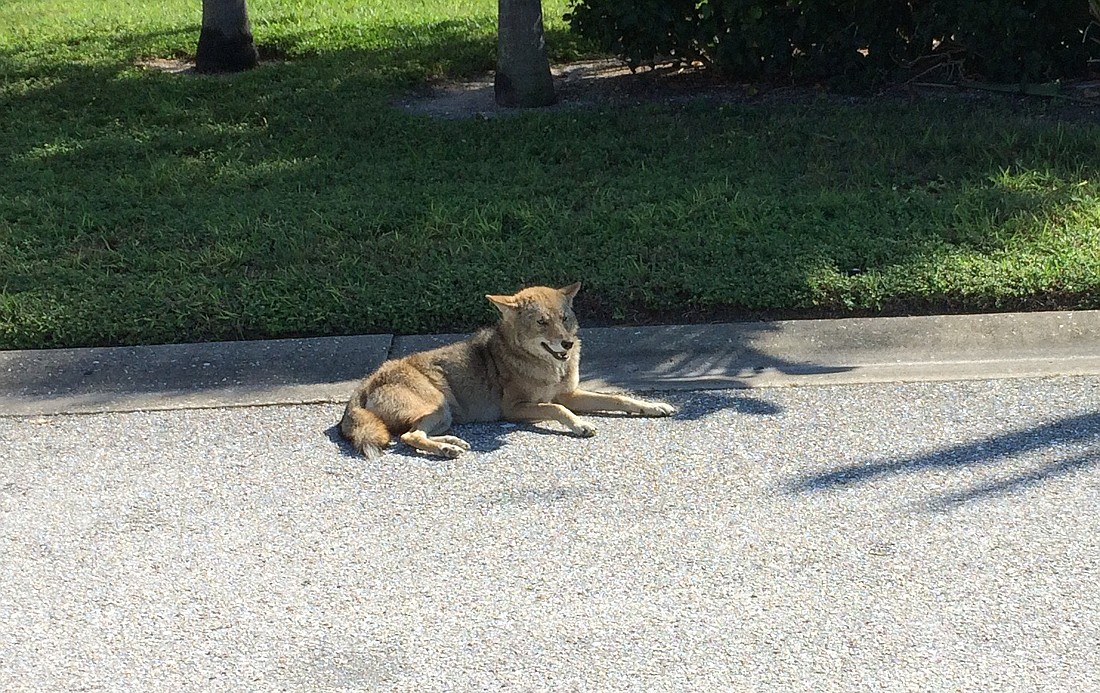- April 20, 2024
-
-
Loading

Loading

Coyote sightings in the last few months in Longboat Key have caused some renewed angst among residents.
It prompted town officials and the Florida Fish and Wildlife Conservation Commission to hold a virtual meeting Tuesday afternoon to discuss what to do if someone comes across a coyote.
During the Zoom meeting, FWC wildlife biologist Angeline Barker explained how to best drive off a coyote.
“Usually, all it takes is raising your voice,” Barker said. “Getting after that coyote, telling it to go away like you would maybe yell at your dog to get off the furniture. You want to be commanding, you want to have attitude and you want to let the animal know it needs to yield to you.”
Longboat Key Police Chief Kelli Smith said the town has had reports of sightings along Gulf of Mexico Drive over about a 5-mile stretch as far north as Broadway Street all the way south to Westfield Street. October 2020's sighting were the island's first since 2018.
“I want to give a special thanks to some of the folks from the communities that brought forward questions,” Smith said.
To drive off a coyote, the FWC recommends using raising your voice, using car and air horns, whistles, rocks and sticks, pots and pans, sprinklers, motion lights and bear spray. Barker said to continue hazing the coyote until it is out of sight.
While Barker said the chances of getting bitten by a coyote are relatively low, there are several things people can do to prevent problems with coyotes. It includes not feeding coyotes; securing garbage; cleaning up pet food, fallen fruit and bird feeders; keeping cats indoors and keeping dogs on leashes and supervised outdoors.
“I don’t want to sugarcoat it for you, coyotes will absolutely 100% (prey on) pets that are free-ranging,” Barker said. “If you have a cat that is free-ranging, it is open to (be attacked).”
Among FWC data collected from 1970-2015 in the U.S. and Canada, there are an average of 8.9 coyote attacks per year. The data found two people were killed during that span.
Although Barker conducted her presentation virtually on Tuesday, it was similar to the one she conducted two years ago at All Angels Episcopal Church. She mentioned how feeding coyotes is illegal in Florida. Anyone can report illegal coyote feeding by calling the Wildlife Alert Hotline at 888-404-3922.
“Don’t feed them, whether it’s directly by giving them a handout like a hot dog, or indirectly by leaving out pet food in a manner that attracts coyotes in,” Barker said.
Coyotes typically weigh between 25-40 pounds. While they can carry rabies, it is rare.
“There have only been two confirmed cases of coyotes carrying rabies in Florida,” Barker said.
Coyotes are found in each of Florida’s 67 counties and in most U.S. cities. They are found in every state except for Hawaii, according to Barker. Coyotes are also omnivorous, meaning they’ll eat just about anything.
“They are highly adaptable,” Barker said. “This is one of the most intelligent wildlife species that's living in our in our communities today.”
Florida landowners have the right to remove a nuisance coyote on private property. It means if a coyote either has caused or is about to cause property damage, if it’s a threat to public safety or is an annoyance in, under or upon a building.
“If you have a coyote meet that criteria, [a] landowner has the right to remove that coyote,” Barker said.
To do that, the landowner would need to hire a licensed trapper. However, not only coyotes are hard to trap, they’ll likely return to the same area once they’re safely relocated within the same county. They also can't be released on private property, limiting the areas to which trappers can move them.